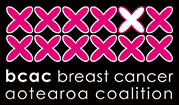Many patients with advanced breast cancer develop lymphoedema either after surgery or as a result of cancer itself. It is swelling on the arm, back or chest on the side of the breast surgery, and can occur at any time after diagnosis, even years later. There are four phases of lymphoedema, ranging from almost completely asymptomatic to debilitating, where it can cause severe pain and reduce a person’s inability to work or perform normal activities. The good news is that oncologic physical therapy can reduce or prevent lymphoedema in the first place. Even in patients with severe lymphoedema, it can be controlled, with complete elimination of pain and complete recovery of movement and strength.
Here's BCAC’s report of a talk on this topic at the recent ABC7 international advanced breast cancer conference:
Managing lymphoedema
Isabelle Aloi-Timeus Salvato, ABC Medical Center, Mexico City, Mexico
All advanced breast cancer (ABC) patients should have access to a multidisciplinary team, and this includes specialists in physical therapy and pain support. Lymphoedema is one of the most significant side effects of cancer treatment and should be addressed quickly. Physical therapy should be started from the beginning of treatment, not just for lymphoedema but for many of the side effects of ABC and its treatment, including pain, limited arm movement, neuropathy and fatigue.
Lymphoedema and its effects
Lymphoedema consists of increased volume in the arms, chest or back on the operated side or where there is tumour activity, resulting in abnormal and progressive lymph accumulation, and obstruction of the lymphatic system. It can appear immediately after surgery or months or even years later, and can appear during treatments.
Lymphoedema has a marked effect on quality of life. It is not just a physical injury but an emotional one, and can result in isolation and limitation of daily activities. Over time the pain can impair the ability to work. It is chronic, progressive and incurable – but it can be controlled.
Treating lymphoedema by stage
A big issue is that many of the therapies used in lymphoedema treatment are absolutely contraindicated and should not be used. These include:
x Massages
x Heat electrostimulation
x Continuous exercises
x Diuretics
x Non-specialised surgery
These therapies should be avoided; instead, lymphoedema should be treated with a qualified physical therapist according to the stage of lymphoedema.
• Stage 0 – no clinical symptoms except some inhibition of lymph function.
• Stage I – reversible. Evident increase in volume and skin is compressible; elevation can improve swelling but does not improve lymph function. Stage I - reversible lymphoedema
Stage I - reversible lymphoedema
• Stage II – spontaneous irreversible. Increased limb volume that does not reduce with elevation, frequent infections, and hardening of the skin. Stage II - spontaneously irreversible lymphoedema
Stage II - spontaneously irreversible lymphoedema
• Stage III – lymphstatic. Exaggerated limb swelling, skin begins to resemble elephant skin, results in disability. Stage III - lymphstatic lymphoedema
Stage III - lymphstatic lymphoedema
Pictures from presentation by Isabelle Aloi-Timeus Salvato
The five components to treating lymphoedema
1. Meticulous care of skin and nails, keeping skin hydrated and controlling acidity.
2. Subtle, soft, slow manual lymphatic drainage.
3. A pneumatic pump can be used in some patients.
4. Compression therapy – stiff Velcro devices should be used during treatment. For maintenance there are sleeves, gloves and flat-knit stockings which should be used. It is important to use the right product to ensure the oedema does not come back. Consult a specialist therapist.
5. Exercises. All patients should do exercise. Aside from its benefits for lymphoedema, it is very important to avoid fatigue.
The following exercises should be personalised for each patient depending on their age and stage of cancer. Exercises can also be done in bed.
• Miolymphokinetic exercises and breathing – support good lymphatic function.
• Stretching exercises – prevent contractures.
• Strengthening exercises – keep the body strong enough.
• Aerobic exercises.
Conclusion
Oncologic physical therapy exists and should be prescribed because, with it, lymphoedema can be prevented and controlled, pain completely eliminated, and movements and strength completely recovered.
Note:
The Lymphoedema Network in New Zealand has support groups and access to lymphoedema specialists throughout the country. Consult with your oncology team for referrals. http://www.lymphoedemanz.org.nz
Marion Barnett
20 November 2023



